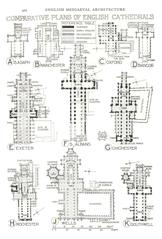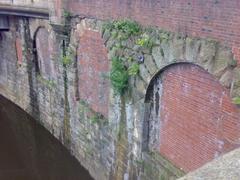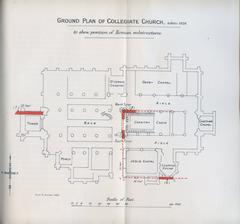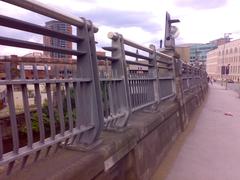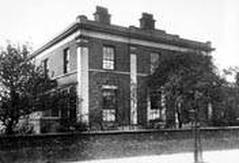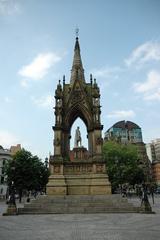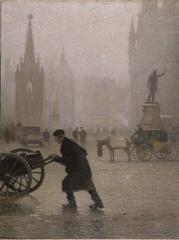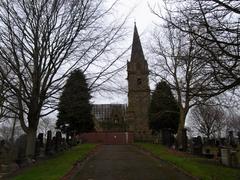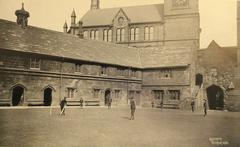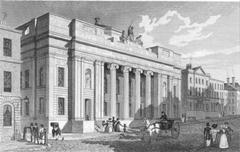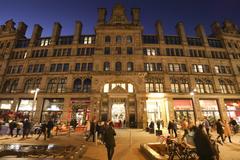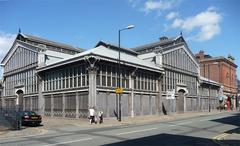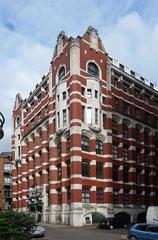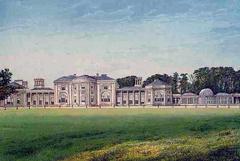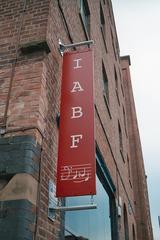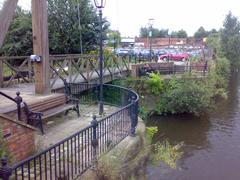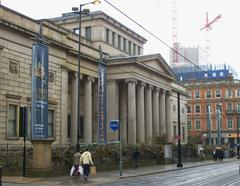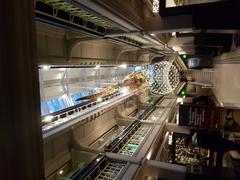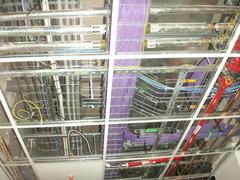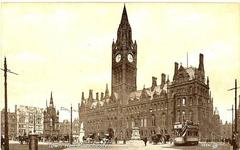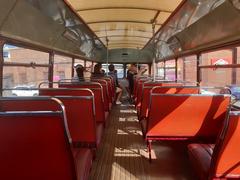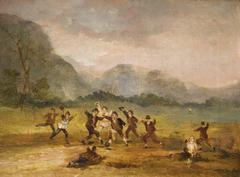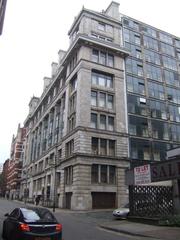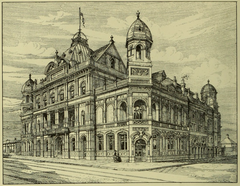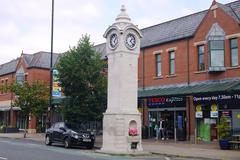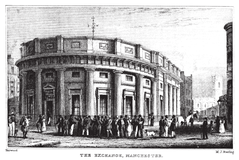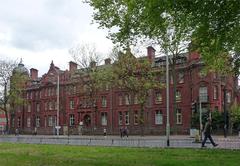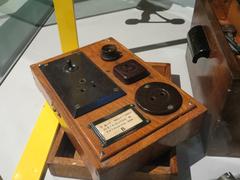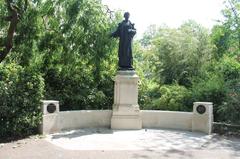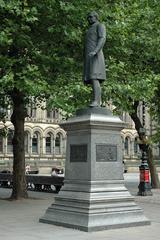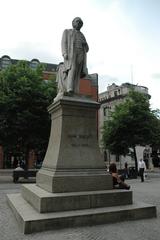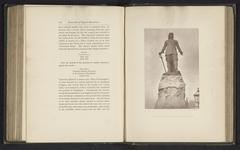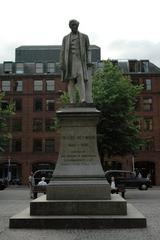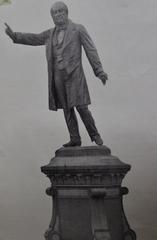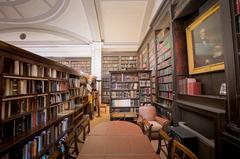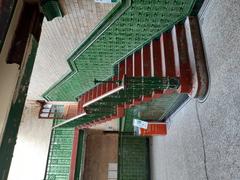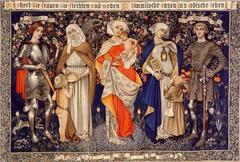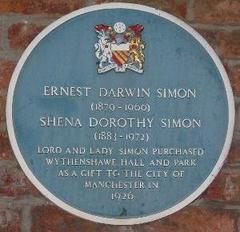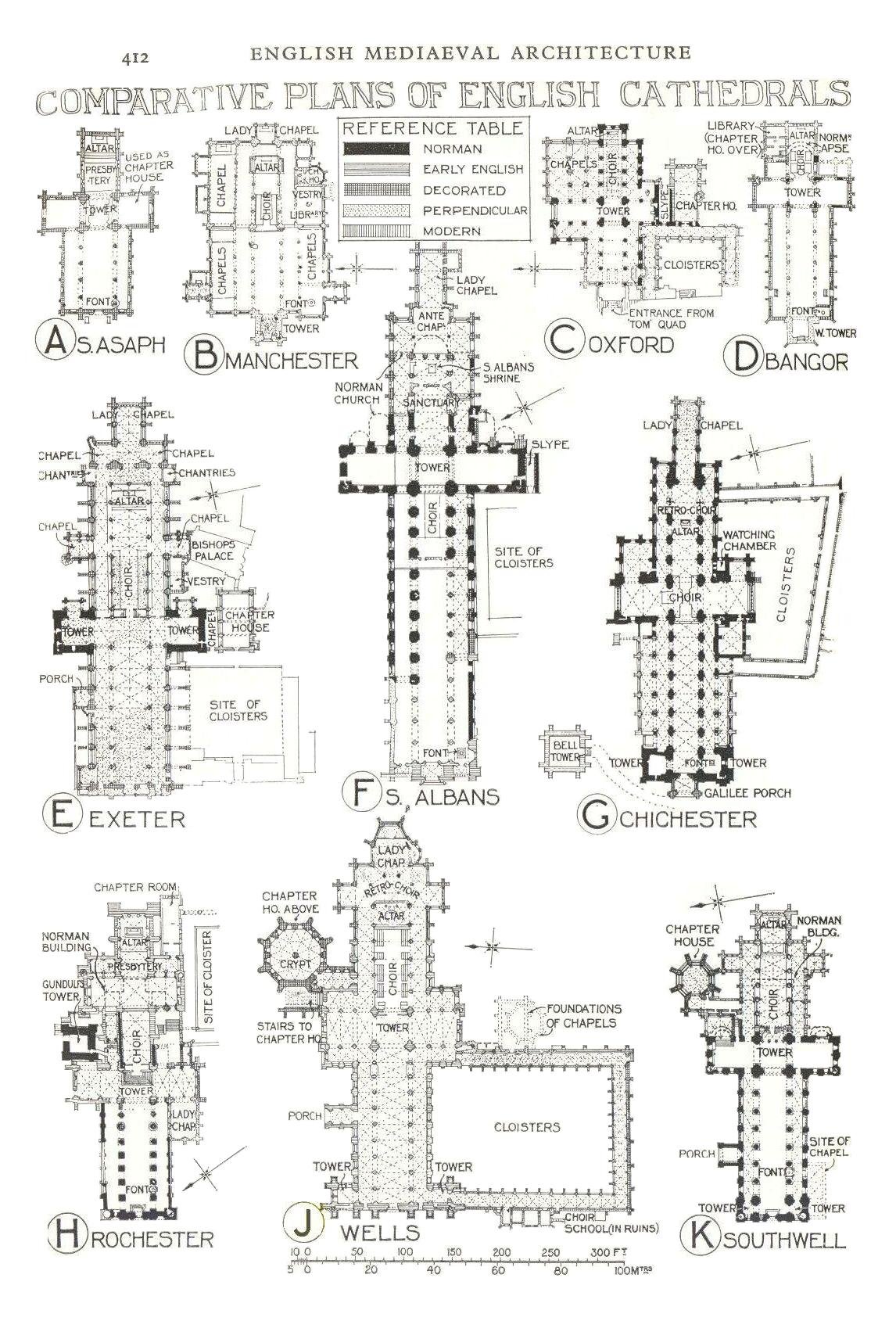
Manchester Cathedral Visiting Hours, Tickets, and Historical Sites Guide
Date: 14/06/2025
Introduction: Manchester Cathedral’s History and Cultural Significance
In the heart of Manchester city centre stands Manchester Cathedral—officially the Cathedral and Collegiate Church of St Mary, St Denys, and St George—a remarkable testament to over a millennium of faith, artistry, and community resilience. Its story begins in the early medieval era, shaped by influential families such as the Grelleys and de la Warres, whose legacy is woven into the very fabric of the building. Elevated to collegiate status in 1421 and later established as the mother church of the Diocese of Manchester in 1847, the cathedral today blends Perpendicular Gothic grandeur with modern restorations, having survived events like the Manchester Blitz and the 1996 IRA bombing.
Beyond its role as a place of worship, Manchester Cathedral is a vibrant cultural hub, hosting concerts, exhibitions, and community events. Visitors are drawn to its stunning features—the intricately carved 16th-century misericords, angel minstrels adorning the nave roof, and an impressive collection of stained glass windows, both medieval and contemporary. Whether you’re seeking quiet reflection or a rich cultural experience, Manchester Cathedral offers an immersive journey into the city’s spiritual and historical heart. For the latest information, refer to the official Manchester Cathedral website, History Hit, and Visit Manchester.
Table of Contents
- Introduction
- Early Origins and Medieval Foundations
- The Grelley and de la Warre Families
- Collegiate Church Status and Tudor Transformations
- Architectural Evolution: Perpendicular Gothic and Beyond
- From Parish Church to Cathedral
- War, Restoration, and Modern Challenges
- Artistic Treasures and Symbolism
- Visiting Manchester Cathedral: Hours, Tickets, and Tours
- Tips for Visitors
- Nearby Attractions and Getting There
- Frequently Asked Questions (FAQ)
- Conclusion
Early Origins and Medieval Foundations
Manchester Cathedral’s site has been a place of Christian worship for over a thousand years. Archaeological evidence, such as the Angel Stone—a carved figure with a scroll—suggests an early church may have existed as far back as the eighth century. The Latin phrase on the Angel Stone, “into thy hands, O Lord, I commend my spirit,” underscores the site’s longstanding spiritual significance. The Domesday Book of 1086 records a church in Manchester, rebuilt after earlier destruction, marking the continuity of worship on this site (History Hit).
The Grelley and de la Warre Families
The construction of a parish church began in 1215, supported by the Grelley family, whose coat of arms remains associated with the cathedral. In 1311, the estate passed to the de la Warre family, and Thomas de la Warre, who became rector in 1382, oversaw the construction of the first tower and played a pivotal role in shaping the church’s development.
Collegiate Church Status and Tudor Transformations
In 1421, King Henry V granted a royal charter, elevating the church to collegiate status and establishing a resident clergy community. The Tudor period brought both challenges and revitalization: the college was dissolved during the Reformation but reestablished under Mary I, with later charters from Elizabeth I and Charles I ensuring its continuance.
Architectural Evolution: Perpendicular Gothic and Beyond
Following its elevation, the church was largely rebuilt in the Perpendicular Gothic style. Notable features include tall clerestory windows, a wide nave (among the broadest in English cathedrals of its era), and the celebrated nave roof supported by intricately carved angel minstrels playing medieval instruments. The choir, adorned with 16th-century misericords, showcases exceptional craftsmanship (Manchester Hive).
From Parish Church to Cathedral
Manchester’s explosive growth during the Industrial Revolution increased the church’s prominence, and in 1847 it was designated as the cathedral for the newly formed Diocese of Manchester. This transition marked the beginning of its modern role as the city’s spiritual, cultural, and civic heart.
War, Restoration, and Modern Challenges
The 20th century brought significant trials. The 1940 Manchester Blitz destroyed Victorian stained glass and the organ. Post-war restoration included the installation of the Fire Window by Margaret Traherne (1966) and a new organ in 1952 (replaced again in 2016). The 1996 IRA bombing caused further damage, prompting restoration and the creation of the Healing Window by Linda Walton in 2004, symbolizing the city’s resilience (Visit Manchester).
Artistic Treasures and Symbolism
Manchester Cathedral is renowned for its 16th-century misericords—among the finest in Europe—and its remarkable collection of stained glass, which blends medieval and modern artistry. The Minstrel Angels, carved in the choir, are a unique feature, while the cathedral’s woodwork, including the pulpit and lectern, showcases exceptional medieval and Renaissance craftsmanship (History Hit).
Visiting Manchester Cathedral: Hours, Tickets, and Tours
Visiting Hours
- Monday to Saturday: 9:00 AM – 5:00 PM
- Sunday: 12:30 PM – 4:00 PM
Hours may vary during religious services or special events. Always check the official website before your visit.
Tickets
- Entry is free, though donations are welcome to support conservation. Some special events and guided tours may require a ticket.
Guided Tours
- Regular guided tours offer deeper insight into the cathedral’s history and art. Booking in advance is advised during busy periods.
Accessibility
- The cathedral is wheelchair accessible, with ramps and accessible restrooms. Staff can provide assistance upon request.
Visitor Amenities
- Facilities include a gift shop with local crafts, a café offering refreshments, and accessible restrooms. Baby changing facilities are available.
Tips for Visitors
- Don’t miss the Minstrel Angels on the nave roof—a highlight for photographers.
- Explore the 15th-century Hanging Bridge via the visitor centre.
- Attend a choral concert or seasonal service for a memorable experience.
- Early mornings are quieter and ideal for reflection or photography.
- Modest attire is recommended during services.
Nearby Attractions and Getting There
Location: Victoria Street, Manchester, M3 1SX
By Public Transport:
- Train: Manchester Victoria station (3-minute walk)
- Tram: Exchange Square Metrolink stop nearby
- Bus: Several city routes serve the cathedral area
By Car:
- No on-site parking, but Q-Park Deansgate North is a short walk away. Pre-booking is recommended.
Nearby Attractions:
- Cathedral Gardens, National Football Museum, and Manchester Art Gallery are also within walking distance.
Frequently Asked Questions (FAQ)
Q: What are Manchester Cathedral’s visiting hours?
A: Monday to Saturday 9:00 AM–5:00 PM, Sunday 12:30 PM–4:00 PM. Check the official website for updates.
Q: Is entry free?
A: Yes, entry is free. Donations are encouraged.
Q: Are guided tours available?
A: Yes, regular guided tours are offered; advance booking is advised for groups.
Q: Is the cathedral wheelchair accessible?
A: Yes, with ramps and accessible facilities.
Q: Can I bring my dog?
A: Well-behaved dogs are welcome.
Events and Community Engagement
Manchester Cathedral hosts regular services, choral performances, family workshops, seasonal festivals, and community activities such as Windrush Day and interfaith dialogues. The cathedral is also available for private hire for concerts, corporate events, and special gatherings.
Facilities, Accessibility, and Family Information
- Toilets: Below the Cathedral Kitchen Café, accessible via lift.
- Baby Facilities: Changing areas available; quiet areas for feeding.
- Food and Drink: The Cathedral Kitchen Café offers meals and snacks. Outside food is not permitted.
- Wheelchair Access: All public areas are accessible, though some surfaces are uneven.
- Pushchairs: Welcome throughout the cathedral.
- Dog Policy: Well-behaved dogs may enter with visitors.
Safety and Security
- Children must be supervised at all times.
- Lost property inquiries at the Visitor Centre.
- Staff are trained for emergencies—follow their instructions if needed.
Visual and Interactive Resources
Explore virtual tours and high-quality images on the official website, with alt-text optimized for accessibility and searchability (e.g., “Manchester Cathedral visiting hours”).
Cultural and Spiritual Significance
Manchester Cathedral’s layered history reflects the city’s evolving spiritual identity and commitment to social cohesion. Its programming welcomes people of all faiths and backgrounds. Concerts, art installations, interfaith events, and social justice initiatives make the cathedral a lively centre of community engagement (Theos Think Tank, Visit Manchester).
Conclusion: Experience Manchester Cathedral
Manchester Cathedral is a living symbol of Manchester’s history, resilience, and creativity. Free to enter and rich in experience, it offers a welcoming space for worship, reflection, and cultural discovery. Plan your visit by checking current hours and events on the official website. Enhance your exploration with guided tours and multimedia resources, and embrace the opportunity to appreciate this iconic landmark as part of Manchester’s vibrant heritage.
For more insights, download the Audiala app for audio guides and follow Manchester Cathedral on social media for news and event updates.
References
- Manchester Cathedral Official Website
- Manchester Cathedral on History Hit
- Visit Manchester: Manchester Cathedral
- Manchester Hive: Manchester Cathedral
- Miss Tourist: Things to Do in Manchester
- Manchester Theatres: Manchester Cathedral
- Theos Think Tank: Spiritual Capital Report
- The Broke Backpacker: Best Places to Visit in Manchester
- All Events in Manchester: Manchester Cathedral
